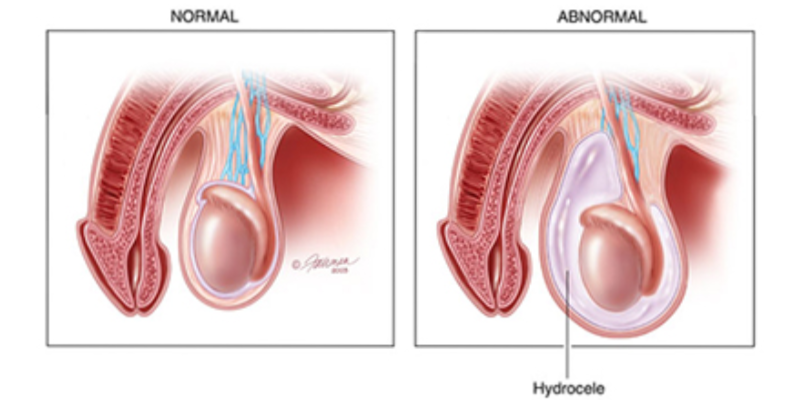
Hernia & Hydrocele Surgery
Hernia and hydrocele are two common surgical conditions that affect men and, in some cases, women. Both conditions involve abnormalities in the abdominal or scrotal region and require medical or surgical intervention for effective treatment. Hernias occur when an internal organ or tissue pushes through a weak spot in the abdominal muscles, creating a visible bulge. Hydrocele, on the other hand, refers to the accumulation of fluid around the testicle, causing swelling in the scrotum. While both conditions are not life-threatening initially, they can cause discomfort, complications, and affect the quality of life if left untreated. Surgery remains the most effective and long-term solution for hernia and hydrocele management.
Causes and Risk Factors
Hernia: A hernia usually develops due to a weakness in the abdominal wall muscles combined with pressure. Common causes and risk factors include chronic coughing, constipation, obesity, heavy lifting, pregnancy, and aging. Some individuals may also have a congenital weakness in their abdominal wall.
Hydrocele: Hydroceles occur when fluid collects in the scrotum, usually due to incomplete closure of the processus vaginalis (a sac-like structure present during development). In adults, hydroceles may result from infections, trauma, or inflammation in the testicles or spermatic cord.
Symptoms That May Require Surgery
Recognizing the symptoms of hernia and hydrocele early is important to avoid complications and seek timely medical care.
Hernia symptoms:
– A bulge in the groin, abdomen, or scrotum, especially visible while standing or straining
– Pain, heaviness, or discomfort in the affected area
– Worsening pain during lifting, coughing, or physical activity
– In severe cases, trapped or strangulated hernia causing nausea, vomiting, or severe pain (medical emergency)
Hydrocele symptoms:
– Painless swelling in one or both sides of the scrotum
– Feeling of heaviness in the scrotum
– In some cases, discomfort while walking or sitting
– Swelling that usually gets worse by evening
– In rare cases, hydroceles may indicate underlying infection or tumor
Diagnosis
The diagnosis of hernia and hydrocele typically begins with a physical examination. For hernias, the doctor may ask the patient to cough or strain to make the bulge more visible. In the case of hydrocele, a technique called transillumination is often used, where a light is shone through the scrotum to detect fluid collection. Additional tests include:
– Ultrasound of the groin or scrotum to confirm diagnosis
– Blood tests or urine tests to rule out infection (for hydrocele)
– Imaging scans like CT scan or MRI in complex hernia cases
Treatment Options
Hernia Surgery: Surgery is the only definitive treatment for hernia, as hernias do not heal on their own. Two main types of surgeries are performed:
– Open Hernia Repair: The surgeon makes an incision over the hernia, pushes the protruding tissue back, and reinforces the abdominal wall with sutures or mesh.
– Laparoscopic Hernia Repair: A minimally invasive procedure using small incisions and a camera, where a mesh is placed to strengthen the abdominal wall. This method offers faster recovery and less post-operative pain.
Hydrocele Surgery: Hydrocele treatment is recommended if the swelling causes discomfort, pain, or cosmetic concerns. Surgery options include:
– Hydrocelectomy: A surgical procedure where the hydrocele sac is removed, and the fluid is drained to prevent recurrence.
– Aspiration (Temporary Relief): Removing the fluid with a needle and syringe, though this is usually a temporary solution and not recommended as a permanent fix.
Recovery and Aftercare
Both hernia and hydrocele surgeries are generally safe and effective. Most patients recover within 1–2 weeks, depending on the procedure performed. After surgery:
– Avoid lifting heavy objects or straining for at least 4–6 weeks
– Keep the surgical site clean and dry to prevent infection
– Follow prescribed pain management and medications
– Wear supportive underwear after hydrocele surgery to reduce swelling
– Attend follow-up visits for proper healing assessment
Conclusion
Hernia and hydrocele surgery are effective, safe, and reliable treatments that provide long-term relief from discomfort and prevent complications. While hernias can become dangerous if left untreated, hydroceles mainly cause discomfort and cosmetic concerns. Consulting a surgeon at the right time ensures faster recovery, improved quality of life, and prevention of serious health risks. With modern surgical techniques like laparoscopic repair and minimally invasive hydrocelectomy, patients can expect quicker healing, minimal scarring, and excellent outcomes.

